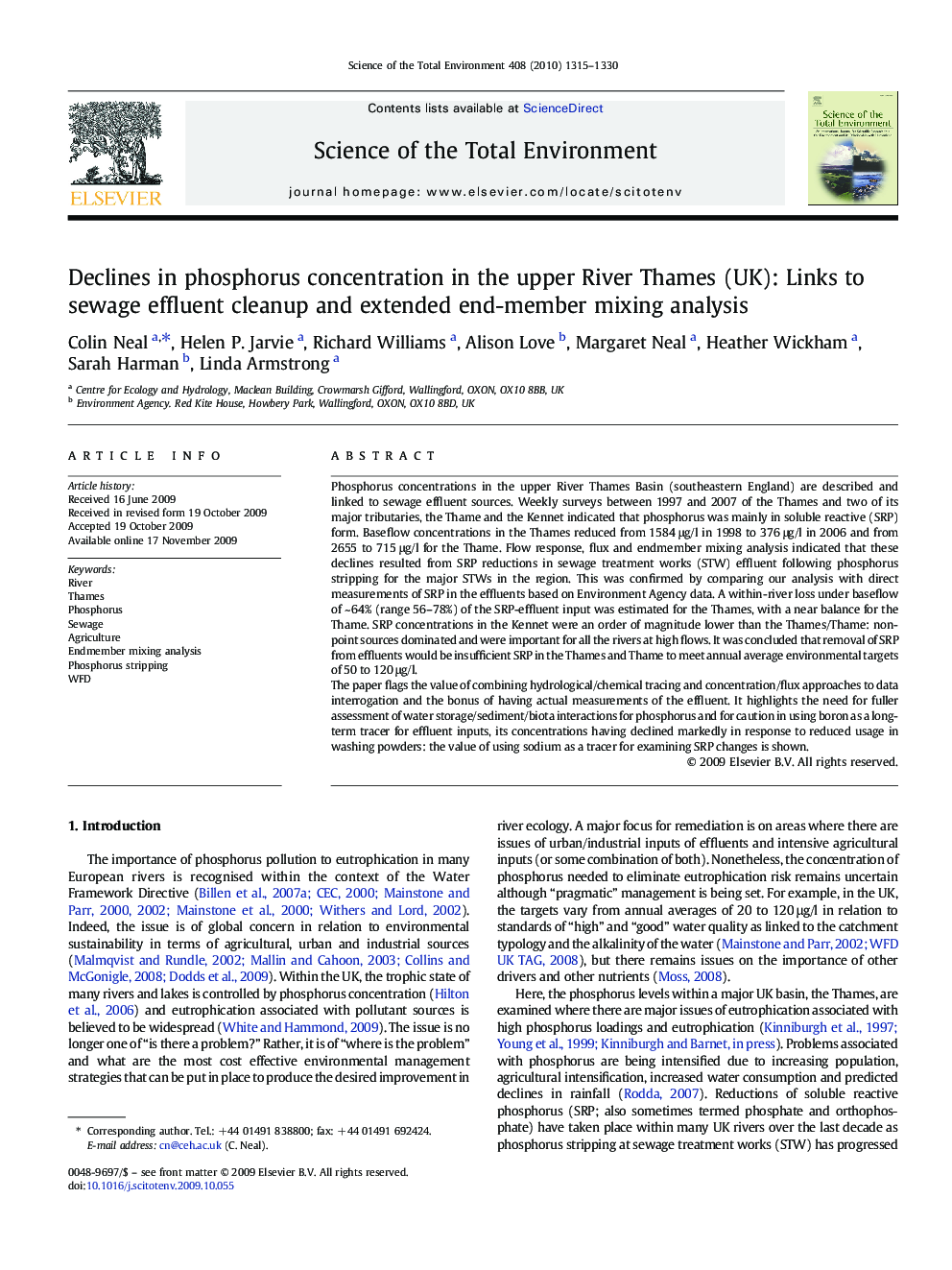| Article ID | Journal | Published Year | Pages | File Type |
|---|---|---|---|---|
| 4430577 | Science of The Total Environment | 2010 | 16 Pages |
Phosphorus concentrations in the upper River Thames Basin (southeastern England) are described and linked to sewage effluent sources. Weekly surveys between 1997 and 2007 of the Thames and two of its major tributaries, the Thame and the Kennet indicated that phosphorus was mainly in soluble reactive (SRP) form. Baseflow concentrations in the Thames reduced from 1584 μg/l in 1998 to 376 μg/l in 2006 and from 2655 to 715 μg/l for the Thame. Flow response, flux and endmember mixing analysis indicated that these declines resulted from SRP reductions in sewage treatment works (STW) effluent following phosphorus stripping for the major STWs in the region. This was confirmed by comparing our analysis with direct measurements of SRP in the effluents based on Environment Agency data. A within-river loss under baseflow of ~ 64% (range 56–78%) of the SRP-effluent input was estimated for the Thames, with a near balance for the Thame. SRP concentrations in the Kennet were an order of magnitude lower than the Thames/Thame: non-point sources dominated and were important for all the rivers at high flows. It was concluded that removal of SRP from effluents would be insufficient SRP in the Thames and Thame to meet annual average environmental targets of 50 to 120 μg/l.The paper flags the value of combining hydrological/chemical tracing and concentration/flux approaches to data interrogation and the bonus of having actual measurements of the effluent. It highlights the need for fuller assessment of water storage/sediment/biota interactions for phosphorus and for caution in using boron as a long-term tracer for effluent inputs, its concentrations having declined markedly in response to reduced usage in washing powders: the value of using sodium as a tracer for examining SRP changes is shown.
